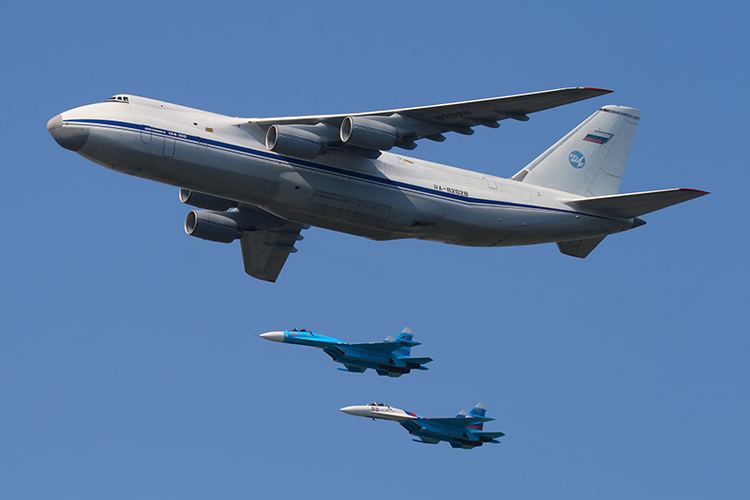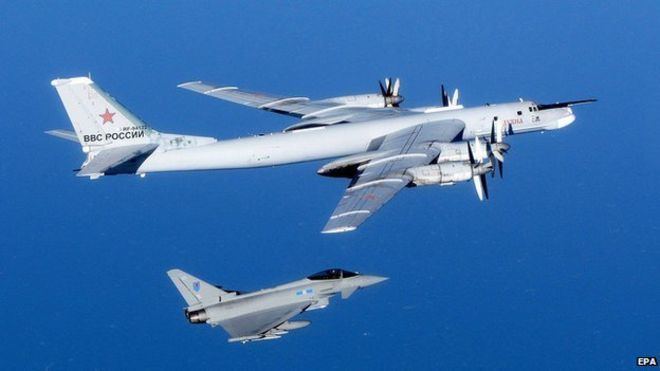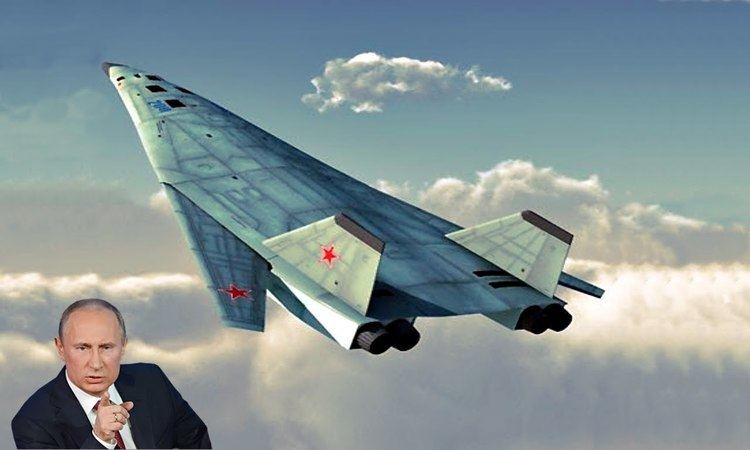Anniversaries 12 August Headquarters Moscow | Type Air force Founded 1992, Russia | |
Size 148,000 personnel (2014)Approx. 3,040+ to 3,155 aircraft3547 aircraft (2016) [1] Similar Soviet Navy, Russian Aerospace Defence Forces, Soviet Air Forces | ||
The Russian Air Force (Russian: Военно-воздушные cилы России, Voyenno-Vozdushnye Sily Rossii, literally "military air forces of Russia") is a branch of the Russian Aerospace Forces, the latter being formed on the 1 August 2015 with the merger of the Russian Air Force and the Russian Aerospace Defence Forces. The modern Russian Air Force was originally established on the 7 May 1992 following Boris Yeltsin's creation of the Ministry of Defence. However the air force can trace its lineage and traditions back to the Imperial Russian Air Service (1912–1917) and the Soviet Air Forces (1918–1991).
Contents

The Russian Navy has its own air arm, the Russian Naval Aviation, which is the former Soviet Aviatsiya Voyenno-morskogo Flota (lit. "Aviation of the military-sea fleet"), or AV-MF.

1991–2000

Following the dissolution of the Soviet Union into its fifteen constituent republics in December 1991, the aircraft and personnel of the Soviet Air Forces – the VVS were divided among the newly independent states. General Pyotr Deynekin (ru:Дейнекин, Пётр Степанович), the former deputy commander-in-chief of the Soviet Air Forces, became the first commander of the new organisation on 24 August 1991. Russia received the majority of the most modern fighters and 65% of the manpower. The major commands of the former Soviet VVS – the Long Range Aviation, Military Transport Aviation and Frontal Aviation were renamed, with few changes, Russian VVS commands. However, many regiments, aircraft, and personnel were claimed by the republics they were based in, forming the core of the new republics' air forces. Some aircraft in Belarus and Ukraine (such as Tupolev Tu-160s) were returned to Russia, sometimes in return for debt reductions, as well as a long range aviation division based at Dolon in Kazakhstan.

During the 1990s, the financial stringency felt throughout the armed forces made its mark on the Air Forces as well. Pilots and other personnel could sometimes not get their wages for months, and on occasion resorted to desperate measures: four MiG-31 pilots at Yelizovo in the Far East went on hunger strike in 1996 to demand back pay which was several months overdue, and the problem was only resolved by diverting unit money intended for other tasks. As a result of the cutbacks, infrastructure became degraded as well, and in 1998, 40% of military airfields needed repair.

The VVS participated in the First Chechen War (1994–1996) and the Second Chechen War (1999–2002). These campaigns also presented significant difficulties for the VVS including the terrain, lack of significant fixed targets and insurgents armed with Stinger and Strela-2M surface-to-air missiles.

The former Soviet Air Defence Forces remained independent for several years under Russian control, only merging with the Air Forces in 1998. The decree merging the two forces was issued by President Boris Yeltsin on 16 July 1997. During 1998 altogether 580 units and formations were disbanded, 134 reorganized, and over 600 given a new jurisdiction. The redistribution of forces affected 95% of aircraft, 98% of helicopters, 93% of anti-aircraft missile complexes, 95% of the equipment of radiotechnical troops, 100% of anti-aircraft missiles and over 60% of aviation armament. More than 600,000 tons of material changed location and 3500 aircraft changed airfields. Military Transport Aviation planes took more than 40,000 families to new residence areas.
The short-lived operational commands were abolished. Two air armies, 37th Air Army (long-range aviation) and 61st Air Army (former Military Transport Aviation), were established directly under the Supreme Command. The former frontal aviation and anti-aircraft forces were organized as Air Force Armies and Anti-Aircraft Defense Armies under the military district commanders. There were initially four such armies with headquarters in St.Petersburg (Leningrad Military District), Rostov-on-Don (North Caucasus Military District), Khabarovsk (Far East Military District), and Chita (Siberian Military District). Two military districts had separate Air and Air Defence Corps. When the Transbaikal Military District and Siberian Military District were merged, the 14th Air Army was reactivated to serve as the air force formation in the area.
The number of servicemen in the Air Force was reduced to about 185,000 from the former combined number of 318,000. 123,500 positions were abolished, including almost 1000 colonel positions. The resignation of 3000 other servicemen included 46 generals of which 15 were colonel generals. On 29 December 1998 Colonel General Anatoly Kornukov, a former Air Defence Forces officer and new commander-in-chief of the merged force, succeeding Deynekin, reported to the Russian defence minister that the task had 'in principle been achieved'. General Kornukov established the new headquarters of the force in Zarya (ru:Заря (микрорайон Балашихи)), near Balashikha, 20 km east of the centre of Moscow, in the former PVO central command post, where the CIS common air defence system is directed from.
2001–2010
In December 2003 the aviation assets of the Russian Ground Forces —mostly helicopters— were transferred to the VVS, following the shooting down of a Mi-26 helicopter in Chechnya on 19 August 2002, that claimed 19 lives. The former Army Aviation was in its previous form intended for the direct support of the Ground Forces, by providing their tactical air support, conducting tactical aerial reconnaissance, transporting airborne troops, providing fire support of their actions, electronic warfare, setting of minefield barriers and other tasks. The former Army Aviation was subsequently managed by the Chief of the Department of Army Aviation. However, by 2010, it was announced that the 2003 decision to transfer Ground Force Aviation to the Air Force was reversed, with the transfer back to the Ground Forces to occur sometime in 2015 or 2016.
During the 2000s, the Air Forces continued to suffer from a lack of resources for pilot training. In the 1990s Russian pilots achieved approximately 10% of the flight hours of the United States Air Force. The 2007 edition of the International Institute for Strategic Studies (IISS) Military Balance listed pilots of tactical aviation flying 20–25 hours a year, 61st Air Army pilots (former Military Transport Aviation), 60 hours a year, and Army Aviation under VVS control 55 hours a year.
In 2007, under the leadership of Vladimir Putin, the Russian Air Force resumed the Soviet-era practice of deploying its strategic bomber aircraft on long-range patrols. This ended a 15-year unilateral suspension due to fuel costs and other economic difficulties after the collapse of the Soviet Union. Patrols towards the North Pole, the Atlantic and the Pacific Ocean were reinstated, bringing the planes often close to NATO territory, including in one instance, flying over the Irish Sea, between the UK and Ireland.
During the 2008 South Ossetian War, the Russian Air Force suffered losses of between 4 and 7 aircraft due to Georgian anti-aircraft fire. The 2008 Russian military reforms were promptly announced following the war, which according to Western experts were intended to address many inadequacies discovered as a result. The reforms commenced during early 2009, in which air armies were succeeded by commands, and most air regiments becoming airbases. Aviation Week & Space Technology confirmed that the reorganisation would be completed by December 2009 and would see a 40 percent reduction in aircrew numbers.
In February 2009, the Russian newspaper Kommersant reported that 200 of the 291 MiG-29s currently in service across all Russian air arms were unsafe and would have to be permanently grounded. This action would remove from service about a third of Russia's total fighter force, some 650 aircraft. On 5 June 2009, the Chief of the General Staff, Nikolai Makarov said of the Russian Air Force that "They can run bombing missions only in daytime with the sun shining, but they miss their targets anyway". Maj. Gen. Pavel Androsov said that Russia's long-range bombers would be upgraded in 2009 with the aim of being able to hit within 20 meters of their targets. Also in September 2009 it was reported that an East European network of the Joint CIS Air Defense System was to be set up by Russia and Belarus. This network was to be established to jointly protect the Russia-Belarus Union State’s airspace. Its planned composition was to include five Air Force units, 10 anti-aircraft units, five technical service and support units and one electronic warfare unit. It was to be placed under the command of a Russian or Belarusian Air Force or Air Defence Force senior commander.
In July 2010, Russian jet fighters made the first nonstop flights from European Russia to the Russian Far East. By August 2010, according to the commander-in-chief of the Russian Air Force Aleksandr Zelin (interview to the Ekho Moskvy radio station, 14 August 2010), the average flight hours of a pilot in Russian tactical aviation had reached 80 hours a year, while in army aviation and military transport aviation it exceeded 100 hours a year. On the 15 August 2010, the Russian Air Force temporarily grounded its fleet of Su-25 ground attack aircraft to conduct an investigation into a crash that happened during a training mission. The Russian Defence Ministry said that the plane crashed on 6 August 2010, 60 km to the north-west of Step air base in Siberia, according to RIA Novosti.
2011–present
According to the instructions of the General Staff of the Armed Forces on 1 September 2011, the unmanned aircraft of the RuAF and the personnel operating them moved under the command structure of the Russian Ground Forces.
As of 2012, the Russian Air Force operated a total of 61 air bases, including 26 air bases with tactical aircraft, of which 14 are equipped with fighter aircraft. In terms of flight hours, pilots in the Western Military District averaged 125 hours over the 2012 training year. Pilots from the Kursk airbase achieved an average of 150 hours, with transport aviation averaging 170 hours.
In 2013, the tricolor red, blue, and white star roundel was phased out and replaced with the traditional Soviet-era Red Star.
On 1 August 2015, the Russian Air Force, along with the Russian Aerospace Defense Forces and the Air Defense Troops, were merged into a new branch of the Armed Forces, now officially called the Russian Aerospace Forces.
On 30 September 2015, Russian Air Force launched a military intervention in Syria, in the Homs region. On 24 November 2015, during the intervention, the Turkish Air Force was responsible for the shootdown of a Russian Sukhoi Su-24 that was claimed to have entered Turkish airspace.
Leadership
Previous highest military office, pre-2015 merger.
Since the merger between the Russian Air Force and the Russian Aerospace Defence Forces on the 1 August 2015, the highest military office of the new Russian Aerospace Forces is titled: Commander of the Aerospace Forces.
Organisation
In 2009 the Russian Air Forces' structure was completely changed to a command-air base structure from the previous structure of air army-air division or corps-air regiment. The VVS is now divided to 4 operational commands, the Aerospace Defense Operational Strategic Command (seemingly primarily made up of the former Special Purpose Command), the Military Transport Aviation Command, and the Long Range Aviation Command. This listing is a composite; the available new information covers frontline forces, and the forces of central subordination are as of approximately August 2008. Warfare.ru maintains what appears to be a reasonably up to date listing, and Combat Aircraft magazine in June 2010 listed their organisation's estimate of the new order of battle.
Forces of central subordination of the Russian Air Force 2008
Training units
The List of Soviet Air Force bases shows a number which are still active with the Russian Air Force.
With the Air Force now fusing into one joint service branch the personnel from the Russian Aerospace Defence Forces and their respective facilities, the following now report to the Aerospace Forces HQ:
Early warning of missile attack:
Voronezh radar at Lekhtusi, Armavir, Kaliningrad, Mileshevka, Yeniseysk, BarnaulDaryal radar at PechoraVolga radar at HantsavichyDnepr radar at Balkhash, Irkutsk and OlenegorskOko early warning satellitesSpace surveillance:
Okno in TajikistanKrona in Zelenchukskaya and NakhodkaRT-70 in Yevpatoria and Galenki (together with Roscosmos)Missile defence:
A-135 anti-ballistic missile systemDon-2N radarSatellite systems:
Liana space reconnaissance and target designation system (2 satellites electronic reconnaissance 14F145 "Lotus-C1")Equipment
The precise quantitative and qualitative composition of the Russian Air Force is unknown and figures include both serviceable and unserviceable aircraft as well as those placed into storage or sitting in reserve. However, reliable source provide slightly divergent estimates of total aircraft inventory; the International Institute for Strategic Studies (IISS) puts the figure at approximately 3,040+ aircraft, while Flight International gives a figure of 3,155 aircraft. According to the Russian Defense Ministry, share of modern armament in the Air Force had reached about 35% during 2014. The figure was raised to 66% by late-2016.
Estimates provided by the IISS show that RuAF combat pilots average 60 to 100 flight hours per year and pilots flying transport aircraft average 120 flight hours per year.
Squadrons
As of 2014:
Ranks and insignia
The independent Russian Air Force inherited the ranks of the Soviet Union, although the insignia and uniform was altered a little and the old Czarist crown and Double-headed eagle were re-introduced. The Russian Air Force uses the same rank structure as the Russian Ground Forces.
